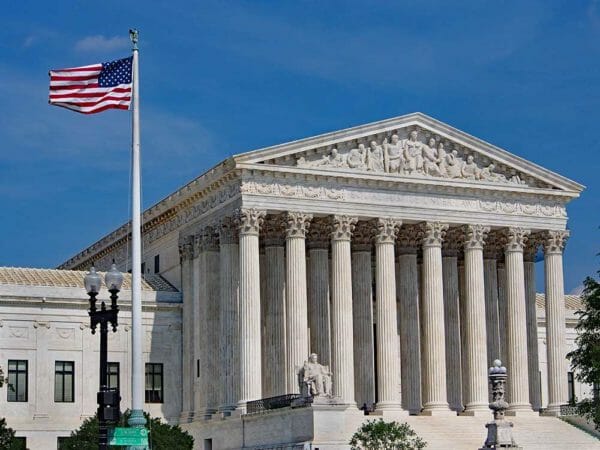
WASHINGTON, D.C. –-(Ammoland.com)- The Supreme Court heard oral arguments last week in the first Second Amendment case heard since the landmark Heller decision.
Heller established the individual right to bear arms. Anti-gun Attorney Generals argued the Second Amendment only applied to government-run militias. These AGs included former California AG Kamala Harris. SCOTUS rejected the AG’s argument and sided with the plaintiffs.
The new case is the New York State Rifle & Pistol Association v. Bruen, which challenges New York’s “may issue” law surrounding its concealed carry permit regime. The case will determine if Americans have the right to carry a concealed weapon for personal protection in the eyes of SCOTUS. If successful, it would change the government’s view of gun rights millions of Americans across the country.
New York’s “may issue” status goes back to the Sullivan Act in 1911. Anyone who wants to carry concealed must apply and prove to local law enforcement a need for a concealed carry permit. Citizens in Up-State New York have a much easier time proving the need for a concealed handgun than residents of New York City. This difference makes a two-tier system. According to the New York Police Department, living in a high crime neighborhood and self-defense is not a valid reason for a concealed carry permit.
The NYSRPA, Robert Nash, and Brandon Koch sued the state over the “demonstrate a special need for self-protection distinguishable from that of the general community or of persons engaged in the same profession” regime. The plaintiffs lost in the Count of the Northern District of New York in 2018.
The Plaintiffs then appealed to the United States Second Circuit Court of Appeals. In August of 2020, the Second Circuit affirmed the ruling of the District Court. The Plaintiffs petitioned the Supreme Court to review the case and determine “whether the Second Amendment allows the government to prohibit ordinary law-abiding citizens from carrying handguns outside the home for self-defense.” SCOTUS granted certiorari in April. Certiorari means that the highest Court would hear the case and hand down an opinion.
Oral arguments were heard a few days ago (November 2, 2021) in the case. The NYSPRA asserts that since the right to bear arms is a core enumerated right, any law should be subject to strict scrutiny. Strict scrutiny means that a law must have a “compelling governmental interest” and be narrowly tailored to achieve that goal. The NYSPRA claims that the District Court applied a loose form of intermediate scrutiny and gave too much deference to the state legislature to make anti-gun laws.
New York claims that strict scrutiny doesn’t apply to the Second Amendment because of “public safety.” They claimed that allowing New York residents to carry concealed handguns would cause the streets to be less safe. When the Justices questioned the States attorney if they had any stats to prove their statement, they couldn’t provide any.
The attorney for New York seemed flustered and was at a loss of words at the questioning from the Justices. When it was brought up that the subways would be filled with guns, Justice Samuel Alito chirped that the subway was already filled with firearms but in the hands of criminals.
Brian Wrenn won a similar case in the United States District Court for the District of Columbia. The Court ruled in Wrenn v. District of Columbia that the right to bear arms extends beyond the home. DC chose not to appeal to SCOTUS at the behest of other states, including New York, because the state’s AGs worried DC would lose the case at the SCOTUS level, wiping out their concealed carry permit laws.
Wrenn sees the liberal Justice on the bench voting against NYSPRA as expected. In fact, the liberal Justices cited laws from 1300s England to attack the pro-gun plaintiffs. The council for the NYSPRA was able to counter every attack with well-thought-out arguments.
“It sounded like the Justices largely suspected opposed to carry rights wanted to litigate whether there can be places with carry restrictions than whether an applicant should get a license according to his/her’s own discretion, i.e., in a shall-issue system,” Wrenn told AmmoLand News. “I also think it odd that oral arguments examined matters of the English Crown in the 1300s. I am hopeful but far from thinking it’s a sure victory.”
SCOTUS is expected to hand down an opinion by Spring of 2022.
About John Crump
John is a NRA instructor and a constitutional activist. John has written about firearms, interviewed people of all walks of life, and on the Constitution. John lives in Northern Virginia with his wife and sons and can be followed on Twitter at @crumpyss, or at www.crumpy.com.


l trust that a 14-year-old Boy Scout with a merit badge in American History has more sense than SCROTUS.